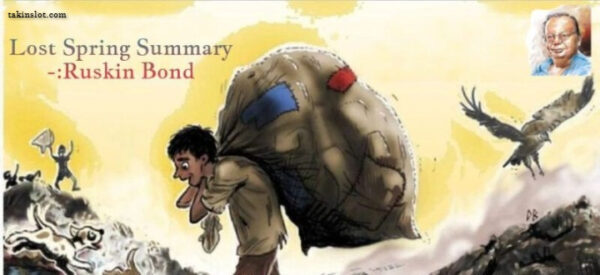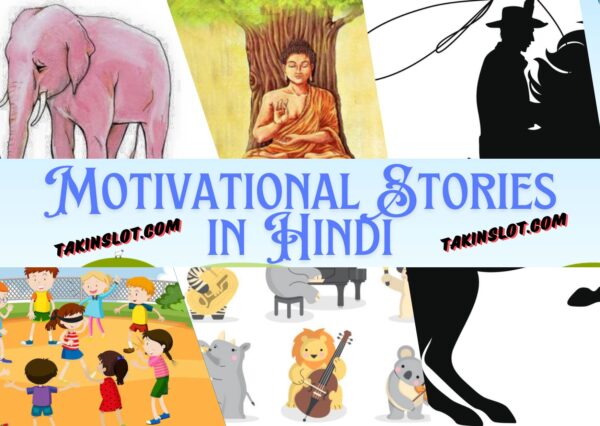Lost Spring Summary: “Lost Spring” by Ruskin Bond is a poignant narrative delving into the lives of two young boys, Saheb and Mukesh, residing in the slums of India. Through this literary gem, Bond sheds light on the harsh realities experienced by numerous underprivileged children, juxtaposed against their dreams and aspirations. In this summary, we will explore the essence of “Lost Spring,” examining its themes, characters, and the profound societal messages it conveys.
Author and Background: Lost Spring Summary
Ruskin Bond, a celebrated Indian author, is known for his compelling storytelling that deeply resonates with readers. Raised in Kasauli, India, Bond’s upbringing in the Indian subcontinent profoundly influences his narratives, including “Lost Spring,” first published in 1999 as part of his collection “A Flight of Pigeons.”
Setting the Scene: A Glimpse into Springs and Childhood Dreams:
“Lost Spring” unfolds in the scenic town of Dehradun, where the arrival of spring symbolizes hope and renewal. The narrative introduces the concept of lost springs, representing dreams and opportunities that never materialize for impoverished children in the slums. Lost Spring Summary
Characters: Exploring the Lives of Saheb and Mukesh:
Saheb, the protagonist, is a rag-picker living in dire poverty with his family. His friend Mukesh, equally destitute, harbors aspirations of education and breaking free from poverty’s cycle.
Plot Unfolds: Saheb’s Plight in the Iron Factory:
Saheb’s journey takes a tragic turn when he is compelled to work in an iron factory, perpetuating the cycle of child labor and exploitation. The iron factory becomes emblematic of lost dreams and the grim reality of economic disparities. Lost Spring Summary
Dreams Deferred: The Hardships of Rag-picking:
The narrative also sheds light on the harsh reality of rag-pickers scavenging for survival amidst heaps of discarded wealth, emphasizing the struggle to make ends meet.
Hopes and Desires: The Role of Education:
Mukesh’s thirst for education emerges (Lost Spring Summary) as a beacon of hope, illustrating the transformative power of education in breaking the shackles of poverty.
Social Realities: Poverty and Exploitation:
“Lost Spring” lays bare the harsh social realities of class divisions and the exploitation endured by the poor. It underscores how systemic inequality perpetuates poverty cycles.
The Clash of Two Worlds: Symbolism in “Lost Spring”:
Symbols like the train and the bangle factory represent the clash between dreams and harsh realities, enriching the narrative with deeper meanings.
Themes and Messages: Lessons from the Story:
“Lost Spring” delves into themes of poverty, education, and societal constraints on dreams. It prompts reflection on our privileges and the urgency to address social inequalities. Lost Spring Summary
Impact of “Lost Spring”: Insights on Society:
The story’s resonance endures, serving as a poignant reminder of the struggles faced by marginalized communities. It calls for action to alleviate social injustices.
Significance of the Title: Analyzing “Lost Spring”:
The title symbolizes the untapped potential and lost aspirations of children trapped in poverty, emphasizing the importance of nurturing young minds.
Literary Techniques: Ruskin Bond’s Narrative Style:
Bond’s narrative prowess shines through vivid imagery and evocative language, engaging readers emotionally.
Why “Lost Spring” Matters Today: Contemporary Relevance:
The issues raised in “Lost Spring” remain pertinent in contemporary times, urging readers to confront ongoing challenges such as child labor and poverty.
Conclusion:
“Lost Spring Summary” by Ruskin Bond is a timeless masterpiece that prompts reflection on the realities of poverty and the resilience of dreams. It inspires readers to work towards a more equitable world where no spring is lost.
FAQs about Lost Spring Summary
What is the significance of the title “Lost Spring” in Ruskin Bond’s narrative?
The title symbolizes the untapped dreams and aspirations of impoverished children, highlighting the lost opportunities they face in breaking free from the cycle of poverty.
How does “Lost Spring” shed light on the harsh realities of poverty and social inequalities?
Through the lives of characters like Saheb and Mukesh, the narrative explores the systemic injustices that perpetuate poverty, exposing the stark divisions between the affluent and the marginalized.
What role does education play in “Lost Spring,” and how does it offer hope amidst adversity?
Mukesh’s pursuit of education serves as a beacon of hope, illustrating the transformative power of learning in empowering individuals to overcome societal constraints and pursue their dreams.
What literary techniques does Ruskin Bond employ in “Lost Spring” to engage readers emotionally?
Bond utilizes vivid imagery, evocative language, and compelling narrative style to immerse readers in the lives of the characters, eliciting empathy and emotional resonance.
Why does “Lost Spring” continue to resonate with readers today, and what societal messages does it convey?
The enduring relevance of “Lost Spring” lies in its depiction of universal themes such as poverty, inequality, and the resilience of the human spirit. It prompts reflection on societal injustices and inspires action towards creating a more equitable world.




